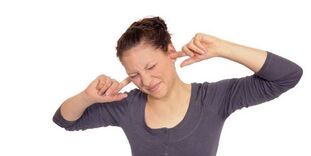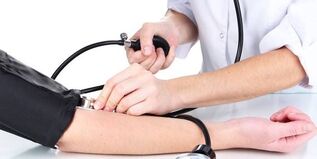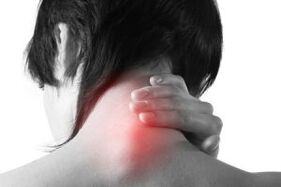In my opinion, the diagnosis of osteochondrosis is not as sad as circulatory encephalopathy and vegetative-vascular dystonia. Yes, by "osteochondrosis" we and abroad understand completely different pathologies. Abroad - these are severe skeletal lesions, mainly in children. For us, it is enough to complain of neck pain, do an X-ray or MRI scan (which will certainly reveal degenerative changes) - and here is the diagnosis of osteochondrosis.
The main causes of back pain
In most cases, the patient is diagnosed with osteochondrosis with back pain. In fact, the reasons are different:
- Unspecific back pain
Caused by muscles, ligaments, tendons. Does not require an MRI. It is the number one cause of back pain and the cheapest option, as doctors usually prescribe appropriate therapy - nonsteroidal anti-inflammatory drugs, muscle relaxants, exercise therapy. It should be noted that completely different medications are needed for chronic pain that lasts more than 3 months. - A fairly rare cause of back pain. Are you surprised? And if an inguinal hernia was found on the MRI and the back hurts, isn't the hernia the cause of the pain? In most cases no. With an inguinal hernia, other symptoms should appear in addition to pain: weakness of certain muscles, decreased tendon reflexes, impaired sensitivity in the innervation zone of the root. There are none of these symptoms - you can forget about the hernia as the cause of the pain.
Serious causes other than pain and symptoms are excluded based on the MRI.
It is much worse when the diagnosis of osteochondrosis is made with completely different symptoms: increased pressure, dizziness, weakness, anxiety, headache. What should we exclude in this case?
- Tension headaches and migraines.
Not related to your neck. Healing your throat means going the wrong way and bringing your pain closer to chronicity. Tension headache can be accompanied by muscle tension, but it is still a tension headache, not osteochondrosis. - vertigo
Not because of acute blues. The real causes of dizziness: benign paroxysmal positional dizziness, violations of vestibular data, vestibular migraines, Meniere's disease, vestibular paroxysm, pathology of the cerebellum and trunk, psychogenic dizziness, iron and vitamin B 12 deficiency, heart disease, lung disease and much more. - arterial hypertension.
Sometimes I come across the opinion that if a patient's blood pressure rises, their throat and of course the vessels of the neck should be checked. Have you noticed arterial hypoplasia, tortuosity, and degenerative changes in the cervical spine? Let's blame them for the pressure rise. That is absurd. In reality there is no connection between increased pressure and the neck. - Anxiety Depressive Disorders.
Do you have anxiety, dizziness, weakness and fatigue, sleep disorders? Let's go back to Benim Neck. And the poor patient gets physiotherapy, massage, and some sort of homeopathy instead of consulting a psychiatrist on antidepressants and sedatives. - Iron deficiency, thyroid dysfunction.
Always remember this when you complain of tiredness, weakness, poor concentration, dizziness and headaches.
Over the years, changes occur in our body. The baby's skin is soft and elastic. At the age of 30 it is no longer the same, no matter how we resort to cosmetic interventions. Imagine a sailor who has sailed his entire life: his skin is rough and wrinkled. The same thing happens with our spine. In most cases, protrusions and hernias are natural changes with age. If there are many provoking factors in your life such as: B. Carrying heavy loads increases the likelihood of developing a major hernia.
Numerous studies have shown that protruding discs appear in healthy people: at the age of 20 years - up to 40% of those examined (remember, these are patients without back pain), at the age of 70 - up to 90%. In addition, the severity of the changes on the MRI is not related to the degree of pain syndrome: with a large inguinal hernia, there may be no pain at all, and with small protrusions the patient may experience severe pain (because the reason is not in protrusions, butin something else).
Does a hernia never hurt?
Of course! In about 1-4% of all back pain cases. How do you know that? An inguinal hernia leads not only to pain, but also to other disorders: sensitivity disorders, reflex changes and sometimes a decrease in muscle strength. All of this will be determined by a competent doctor during a neurological examination.
If the muscle strength is sufficient, the reflexes when tapping with a hammer are symmetrical, not weakened, there are no sensory disorders, then it is extremely unlikely that back pain is caused by an inguinal hernia.
In addition, if you compress the spine root at a certain level (if you read the results of the MRI, you will find that protrusions and hernias are described at the level, e. g. C3-C5 or L5-S1)the hernia not only causes a decrease in sensitivity, but also inspecific segments and strictly defined changes in reflexes. The neurologist correlates the lesion level with the MRI data.
Classification of symptoms in cervical osteochondrosis
The development of this disease sometimes occurs before the age of 30 to 35, so signs of the disease can also appear in adolescence. Signs of cervical osteochondrosis are discussed in detail below. The disease has become a real problem in the modern world. A lack of exercise and prolonged stays in front of a computer have a negative effect on a person's state of health and well-being. All symptoms of cervical osteochondrosis are associated with malfunction of several systems:
- In advanced cases there are signs of compression, the integrity of the spinal cord in the spinal canal is impaired.
- The pathological nerve process can affect the peripheral system. The roots of the spinal cord, which are located near the foci of deformation of the bone and cartilage tissue, are negatively affected.
- In some cases there is pinching of the vertebral arteries. These blood vessels deliver nutrients, oxygen, to the brain cells. Violation of these processes leads to a sharp deterioration in human well-being.

It is known that one of the first signs of the development of the disease is pain in the cervical spine. At first it goes quickly, is periodic, but then becomes chronic. The main places of pain localization are:
- occipital muscles (strengthened by turning the neck, tilting the head);
- shoulder area;
- neck.
Depending on the location of the lesion, it can hurt in different ways. Unpleasant sensations can be sharp, shooting, regularly subside, painful and constant. Over time, head movements become more difficult due to tension in the neck muscles. When an artery is pinched, a cervical migraine is sometimes observed (with a weakening of the blood supply, a lack of oxygen, headache occurs).
nausea
In some cases, the vessels of the circulatory system are compressed, which supplies the human brain and inner ear with oxygen and nutrients. For this reason, nausea occurs with osteochondrosis. These symptoms are usually associated with a loss of appetite, which leads to weight loss and a lack of the necessary nutrients. In advanced stages, turning the head, walking, or stooping may induce vomiting. This is due to a lack of blood supply to the middle ear, which is where balance is located.
Neurological symptoms of cervical osteochondrosis
Some manifestations of the disease may not immediately be attributed to characteristic signs. You should know what symptoms of cervical osteochondrosis cannot be ignored, such as: B. Lack of air. If this section is damaged, phrenic nerve irritation syndrome may develop. The patient has breathing difficulties, there is a lack of oxygen, which leads to shortness of breath and even severe suffocation.
This manifestation of pathology is often accompanied by snoring. It increases if you take an uncomfortable position while you sleep. This leads to the fact that a person does not rest at night, wakes up with a feeling of general malaise, weakness, feels tired and overwhelmed. If left untreated, this condition can lead to impaired memory, decreased concentration, and irreversible changes in brain tissue.
Vestibular signs
Another direction in which osteochondrosis of the cervical spine is manifested - vestibular signs. The brain is supplied with all the necessary nutrients via the vertebral arteries. If cervical chondrosis, in which the inner ear is disturbed, develops, the patient will experience tinnitus and ringing. In certain cases, hearing loss or hearing loss may develop with these symptoms.

Lump in the throat
In some cases, the disease manifests itself in only one symptom - the throat. There is a feeling that a lump with osteochondrosis of the cervical spine has formed in the throat, there is sweat, itching, dryness, swallowing is difficult. These manifestations are associated with impaired conductivity of the neurovascular trunks emanating from the spinal cord. A lump in the throat is not a specific symptom of chondrosis, but can indicate a tumor or an inflammatory process. If this symptom occurs, it is imperative to consult a doctor.
Visual signs of cervical osteochondrosis
Symptoms of chondrosis of the cervical spine can vary, but the most common are visual acuity disorders. Visual analysis equipment is supplied via the carotid and vertebral arteries. If there is a decrease in blood flow due to the squeezing of the latter, then a decrease in eyesight begins, which does not improve with wearing glasses. Cervical Osteochondrosis - Symptoms:
- low blood pressure;
- floating, flickering points;
- atherosclerosis of the arteries in the brain;
- Violation of focus on the topic;
- Shroud, fog in front of the eyes.
A characteristic sign that a visual impairment occurs due to the pinching of a blood vessel by a vertebra and impaired blood flow is the lack of improvement in wearing glasses and doing special exercises. Only timely treatment of the underlying disease (before the appearance of irreversible tissue damage) will help change the condition.
Arterial signs

The spine plays an important role in the human body, so every disease affects many systems. There are certain arterial signs of cervical osteochondrosis that are indicative of this disease. This includes the sudden loss of consciousness. This is the most unpleasant and dangerous symptom of this disease. This happens due to impaired blood flow when the blood temporarily stops flowing through the cerebral arteries.
Severe arterial spasm occurs due to the response of deformed bone processes to irritation of the nerve endings. If your friend has osteochondrosis of the cervical spine and has lost consciousness, they will need to lie down and raise their legs slightly to increase blood flow from the limbs and flow to the brain. After that, people tend to recover quickly.
Blood pressure instability is another symptom of this disease. Doctors can diagnose convulsive indicators when the blood supply is cut. This is not a specific symptom of chondrosis, but it fits into the general picture of the disease. Blood pressure can drop or rise sharply. A person feels his condition worsening, so he must take care of peace.
dizziness
It was previously described that this disease sometimes causes unconsciousness. This applies to cases where blood flow to the brain has been very difficult. More often, patients experience dizziness with cervical osteochondrosis. This is a common symptom that accompanies all patients with this disease. This phenomenon manifests itself spontaneously. This condition is caused by a decrease in the amount of oxygen delivered to the inner ear. It is located in the human brain and is responsible for the sense of balance. Dizziness occurs when:
- turn your head and neck;
- if you suddenly get up.

Temperature in osteochondrosis
In some cases, pathological processes spread to the structures of the cervical segment of the spinal cord. This happens with intervertebral disc protrusion, canal stenosis. The temperature in osteochondrosis is the body's response to these pathologies. The same reaction is possible with vertebral artery syndrome. This is a common occurrence in osteochondrosis in the latter stages of the development of the disease. An increase in temperature, therefore, relates to non-specific symptoms of the disease.
This symptom does not have to be present, the body thermoregulation can be normal. If you have constant pain in the back of your head, shoulders and neck, and if you turn or tilt your head, it will get worse. You should consult a specialist and undergo an examination. Lack of treatment inevitably leads to the fact that the condition worsens and the comfort of life decreases.
Learn more about what to do if osteochondrosis of the cervical spine is diagnosed.
Symptoms of cervical osteochondrosis
Cervical osteochondrosis is a lesion of the intervertebral discs of the cervical spine, as a result of which they undergo degenerative-dystrophic changes. The main reason for its development is a violation of the normal course of metabolic processes, which leads to a distortion of the structure of the vertebral bodies and cartilage discs. With localization in the neck, the symptoms of the pathology are largely determined by the compression of large vessels. Methods of treatment are selected depending on the stage, specificity of the course, severity and main symptoms.
Features of the disease
The cervical form is the most dangerous type of osteochondrosis: it leads to deterioration in brain circulation as the vertebral artery crosses this area - one of the largest vessels that supply the brain with essential substances and oxygen.
Displacement of the vertebrae, abnormal changes and overgrowth of bone and fibrous tissue disrupt the normal function of the vessel.
The specificity of the symptoms of osteochondrosis in this part is determined, among other things, by one of the structural features of the cervical vertebrae, which is that they are more closely attached to each other. As a result, every change in one segment leads to the failure of the entire department.
Clinic depending on the stage
Cervical osteochondrosis goes through four stages in the course of its development. How does it manifest on each of them?
- Stage 1. It is characterized by the appearance of initial disturbances in the stability of the intervertebral discs. Symptoms are mild or absent. Not very pronounced pain sensations and local muscle tension are possible.
- Stage 2. The intervertebral disc protrusion begins, the gaps between the vertebrae are reduced, the annulus fibrosus collapses. In many cases, pain occurs as a result of the compression of the nerve endings, which is mainly of a punctiform nature. They gain strength as you turn and tilt your neck. Decreases the tone, weakness often occurs.
- Stage 3. The process of final destruction of the fibrous ring leads to the formation of hernias. This stage is characterized by a significant deformation of the spine. Increased pain and fatigue occur against the background of sensory disorders and restricted mobility in the affected area.
- Level 4 is the most difficult. The intense pain syndrome manifests itself in all attempts at movement, which significantly limits the mobility of this department. Sometimes the pain subsides, but this does not indicate any improvement in the condition, just indicates an increase in the size of the bone growth, which significantly restricts movement. They often lead to a disability for the patient.
Symptoms of cervical osteochondrosis
In the cervical spine, the predominant symptoms of osteochondrosis are:
Pain is the main symptom
- pain in the cervix, in the back of the head, in the shoulder and in the arms;
- Restriction of movement, crunching at different turns, inclination to tilt;
- weakness in the hands;
- drawing pain in the left side of the chest radiating to the corresponding arm;
- Burning sensation in the interscapular zone;
- recurring headaches;
- weakness;
- dizziness (severe cervical osteochondrosis may lead to unconsciousness);
- Movement coordination is impaired, which is mainly reflected in the gait;
- hearing loss, ringing in the ears;
- decreased eyesight;
- sore throat;
- poor dental health;
- Weakness or hoarseness of the voice;
- Snoring is a result of tension in the neck muscles.
In the cervicothoracic type, the symptoms are almost similar to those of cervical osteochondrosis. That:
- asthenic syndrome;
- dizziness and headache;
- periodic pressure fluctuations;
- blinking flies in front of the eyes;
- pain in the shoulder girdle and arms;
- muscle weakness;
- numbness, tingling, shivering fingers;
- chest pain, heart area;
- nausea;
- numbness of the tongue, face;
- dental problems;
- Sensation of current along the arms when trying to bend the neck.
Syndromes
Symptoms of cervical osteochondrosis are not considered typical. Which of them are most pronounced largely depends on the specific goal. Many of the manifestations can be mistakenly associated with other pathological conditions. Therefore, there are often cases when the wrong treatment is prescribed. The symptom complex is divided into the following groups:
- radicular;
- vertebral artery syndrome;
- Stimulus reflex syndrome.
Radicular Syndrome
The second name is Cervical Sciatica. The syndrome is caused by pinching the nerve endings in the neck. The pain is transmitted to the fingers from the neck, which is transmitted to the shoulder blades, along the shoulder, along the outside of the forearm. In this case, the following is often displayed:
- creepy feeling;
- tingling of the hand, forearm, fingers;
- pasty.
The manifestations also vary depending on the area of the lesion. When the ends of the central nerve are affected, the pasticity extends to the thumb, middle, and index fingers. When the ends of the brachial nerve become pinched, the little finger and ring finger are affected.
Stimulus reflex syndrome
Burning, sharp pain in the cervico-occipital area that occurs during movement after a static state: after sleeping, when sneezing, a sharp turn of the head becomes a sign. Often the pain radiates to the shoulder and chest.
vertebral artery syndrome
Symptoms of cervical osteochondrosis are:
- throbbing or burning headache (paroxysmal or persistent) that spreads to the temporal area, darkness, back of the head, and forehead ridges;
- increased discomfort with certain movements or after a long stay in an uncomfortable position;
- general weakness;
- nausea;
- unconsciousness;
- hearing problems;
- disorders of the vestibular apparatus;
- eye pain;
- blurred vision.
cardiac syndrome
When this complex of symptoms of osteochondrosis of the neck develops, a picture almost similar to angina develops, which often leads to incorrect treatment. Muscle contractions and spasms in the heart area are most likely a reflex response to the compression of the nerve endings in the lower cervical area. The heart syndrome is a result of irritation of the phrenic nerve (its fibers lead to the pericardium) or the pectoralis major muscle:
- Pain occurs suddenly and lasts a long time;
- aggravated by a sharp movement of the throat, coughing, sneezing;
- Tachycardia and extrasystole are possible;
- The pain doesn't stop after taking coronary dilators.
- There are no signs of a circulatory disorder in the ECG.
Aggravation of the disease
In the exacerbation stage, the symptoms of cervical osteochondrosis are:
- increased pain and its irradiation of the shoulder blades, the interscapular zone, the arms and shoulders;
- Difficulty moving shoulders, trunk, arms, sometimes breathing (inhaling and exhaling); The
- pain syndrome often resembles a heart attack or intercostal neuralgia.
- If there is pain in the right hypochondrial or iliac area, the clinic resembles the manifestations of gastritis or cholecystitis.
- Headaches are of a prolonged nature, imbalance, visual and auditory functions are disturbed;
- in the innervation zone the skin trophyism is disturbed, tingling, numbness, dryness, paleness, burning, shivering occur;
- the tone of the neck muscles increases;
- weakness, lethargy, nervous tension, fear, emotional instability occur;
- possible sleep disorders, memory disorders and concentration problems.
How the disease is diagnosed
The leading methods for diagnosing cervical osteochondrosis are:
- radiography;
- magnetic resonance imaging;
- computed tomography;
- Doppler ultrasound;
- duplex scanning.
The last two methods are used to check the condition of the neck vessels.
Signs of cervical osteochondrosis
The cervical spine contains a large number of blood vessels that supply the brain with nutrients. Therefore, problems with the neck, including cervical osteochondrosis, can lead to a deterioration in the blood supply to the brain. Hence - and the most common signs of cervical osteochondrosis:
- regular headaches and dizziness,
- occasionally - sudden fainting,
- impaired the coordination of movements, the appearance of "looseness" of the gait,
- Deafness, ringing in the ears,
- visual impairment,
- the occurrence of dental diseases,
- the appearance of hoarseness in the voice, the change in the timbre of the voice, its weakening,
- snore,
- persistent sore throat.
Other symptoms of cervical osteochondrosis are a feeling of coldness in the fingers, their numbness, weakness in the arms, pain in the neck and shoulders, often accompanied by dizziness and nausea.
How to treat this disease
Osteochondrosis of the cervical spine, symptoms and treatmentdepend on the patient's condition, the severity of the disease and the type of lesion of the cervical vertebrae.
- In the acute phase, hospital stays and medication may be necessary.
Analgesics, novocaine muscle blocks, muscle relaxants, and muscle spasms relief are commonly used. Chondroprotectors for the nourishment of cartilage tissue; Sedatives that calm the nervous system, B vitamins that improve neuromuscular conductivity.
Treatment of osteochondrosis of the cervical spine is always long-term and should be comprehensive.
- During periods of remission when there are no acute symptoms, methods of physiotherapy (electrophoresis, ultrasound, etc. ) are widely used, requiring physiotherapy, massage, as well as non-traditional procedures such as acupuncture.
There are many conservative treatments for osteochondrosis that can stop the disease from getting worse. However, each patient needs an individual course of treatment, taking into account the stage of the disease, the characteristics of the organism, sex and age.
The goal of treating cervical osteochondrosis is:

- Elimination of pain and swelling at the site of inflammation.
- Relaxation of tense neck muscles.
- Release of pinched nerve roots.
- Increased blood flow.
- Metabolic activation.
- Improving the nutrition of the intervertebral discs.
Targeted complex treatment can prevent protrusions and intervertebral hernias from occurring.
In order to avoidosteochondrosis of the cervical spine, symptoms and treatmentand to avoid serious complications of the disease, treatment should be started in good time.
























